Is your motorcycle clutch slipping more frequently than it used to? Inconsistent clutch engagement can slack off the smooth operation of a motorbike. These problems are often caused by improper adjustment of the clutch engagement point. Clutch disengagement issues are common and can be frustrating to new or advanced riders. But the good news is, you can learn how to adjust clutch engagement point motorcycle all by yourself.
When adjusting the clutch engagement point on a motorcycle, you need to adjust two components. First is the clutch slack, and the second is the foot lever assembly. For this adjustment, you will need to remove the right-side cover. You can do it easily with a single screwdriver or by pushing it down on a tab at the side of the cover.
Whether you need to replace a clutch cable or you are simply trying to enhance the performance of your motorcycle, properly adjusting the engagement points on your clutch is an essential thing to do. The right tool for this is the motorcycle torque wrench set, or you can get an expert to do it for you.
What Is A Motorcycle Clutch?
A motorcycle clutch is a plate that connects the engine to the transmission. You press down on a lever connected to the clutch when you want to move forward and release it when you want to stop.
One of the things you have to get familiar with when learning how to ride a motorcycle is the function of the clutch. It is an important mechanism that turns on or off the power to the rear wheel so that the rider can change gears.
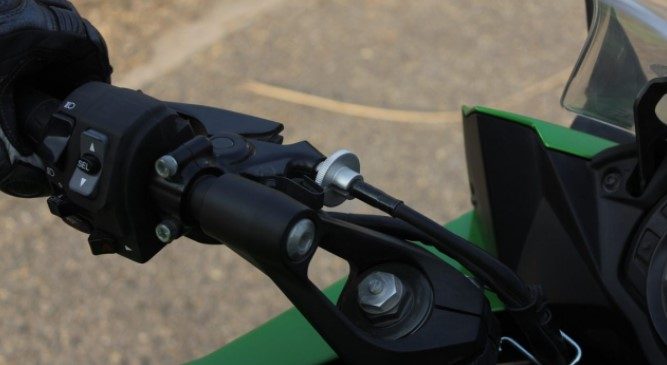
In addition to a clutch basket, it contains a host of small parts that allow you to throw the adjustable levers, push the button, or twist the throttle to engage or disengage it.
Slipping or sticking is common to motorcycle clutch and you can fix the problem by adjusting the clutch engagement point.
Moreover, you must always pay close attention to the cable clutch because the danger of a loose clutch engagement point motorcycle is not just a minor inconvenience. It can abruptly lead to some severe life-threatening injuries while riding your motorcycle. So, you must always do a routine check whenever you intend to go out for a ride.
How Does A Motorcycle Clutch Work?
The use of a clutch is critical for smooth acceleration and high speeds, whether you ride a sportbike, dirt bike, or cruiser. Therefore, you must know how a motorcycle clutch works, and the best way to do that is to be familiar with the parts.
For the clutch to work, it has to be compressed, causing the clutch pressure plate to retract. It then separates the friction and the steel plates that rotate on their own, thereby disconnecting the engine from the transmission.
At this point, the power to the rear wheels stops, and then you can change the gears and move the motorcycle. But to understand the whole mechanism, you need some basic idea about the different parts of a motorcycle clutch.
Parts Of A Motorcycle Cloth And Their Functions
1. Outer basket
The outer basket, also known as the primary chaincase, connects to the drive sprocket at the bike’s front and serves two purposes. It holds lubricating oil and stores the primary gearbox’s low gear spring (also known as a Kickstarter).
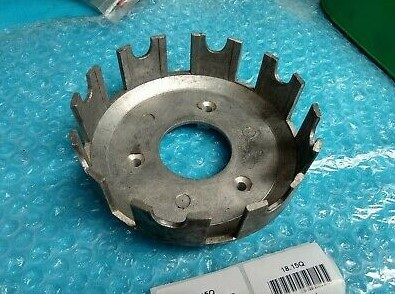
Also, the outer basket section of a motorcycle’s clutch is designed to prevent unwanted movement of the flywheel when in neutral or with the clutch disengaged. To do this, it features three electrical contacts, which are pulled against a metallic plate when the clutch is released or set.
In addition, it is located at the bottom of the engine. The basket looks metal to protect the engine from wear and tear through the process of braking and accelerating.
2. Inner hub
The inner hub is the center of a motorcycle’s driveline and consists of a short hub that usually contains a one-way bearing and an inner sprocket. It conveys power from the transmission to the rear wheel and is located at the front of the crankcase.
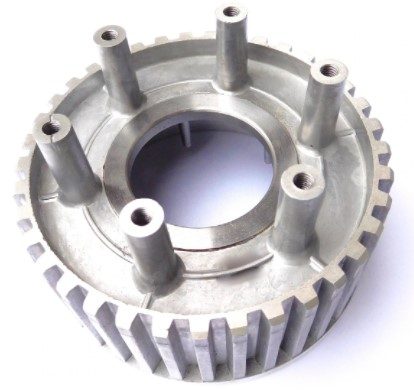
The primary function of the inner hub is to control the force of the clutch. A light touch on the pedal allows smooth starts and stops, while a strong push makes it easier to pop back onto the road as you accelerate.
3. Friction plates
The friction plates are used to transfer the force of the pushrod and release it when the clutch lever is pulled. The friction plates are located between the pressure plate and flywheel.
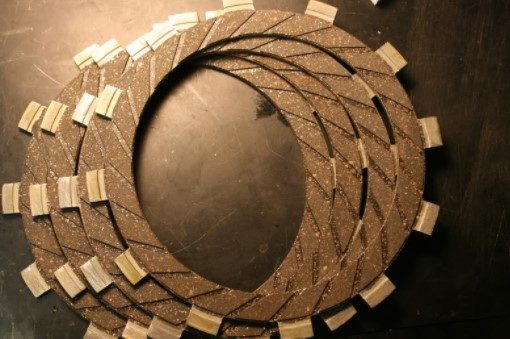
It acts as the primary interface between the rotating motor and the clutch bell, containing the friction material. Friction plates help transmit power from the motor to the drive wheel.
4. Pressure plate
Pressure plates come in almost every size and many designs, but they all have one thing in common, they are made to take a load, that of the torque produced by an engine.
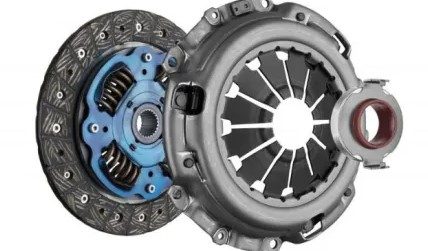
The pressure plate is molded of high-strength material reinforced with aluminum, forged steel, or cast iron, and it is entirely covered by rubber. The pressure it exerts is controlled through a precision roller on the cover.
What Are The Different Types Of Motorcycle Clutches?
There are different types of motorcycle clutches on the market today, and they all serve a purpose. Below is some basic information about the different motorcycle clutches found in motorcycles today.
Multi-plate Clutch
The multi-plate clutch uses a system of stacked clutch plates to mechanically connect the engine to the transmission. It is essentially two separate clutches in one housing, each individually controlled by its cable or push-pull rod.
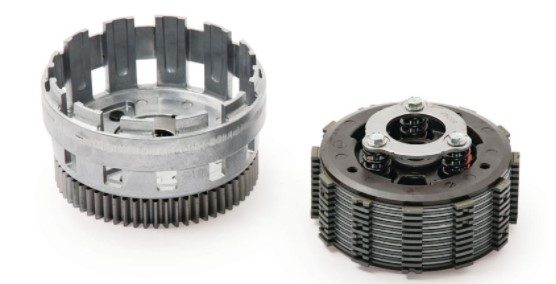
Also, the clutch is the most expensive, lightest, and gives an all-around performance. The clutch has springs to assist in disengagement, which helps eliminate wheel hop and reduces heat buildup. Most motorcycles that you see today use this type of clutch.
It uses a single spring at the center of the assembly with plates on either side. When the lever is pulled or pushed, pressure is applied to all sides of the springs until the clutch disk disengages and the bike pushes forward.
In addition, the time and effort required to engage the clutch are affected by many factors, including the torque produced by the engine and the position of the shift lever. Each multi-plate system consists of plates that rest against each other, with springs designed to control how much pressure is placed on them.
Therefore, the plates are responsible for transferring power when the engine is running but can create a problem when they are disengaged. The problem usually occurs when an inexperienced rider applies excessive force while attempting to shift gears.
Also, there are instances when riders step on the clutch to slow down while coming to a stop. It also causes an issue because they do not have enough experience on how much force to apply to begin slowing down without applying too much force and disengaging the multi-plate system.
Slipper clutch
A slipper clutch is a friction clutch originally developed for off-road motorcycling. It is a mechanism that limits the effect of the engine on the gearbox but still allows a rider to slip the adjustable levers.
Also, the slipper clutches have a special mechanism that allows them to slip just before the rear wheel locks, so they are very good in slippery conditions or when the rider brakes.
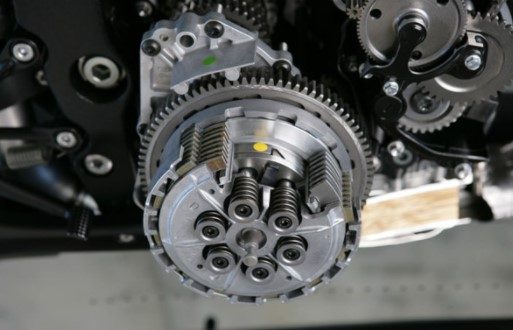
They are also known as release or ‘controlled’ clutches. Slipper clutches do not require any maintenance except careful lever adjustment, which an experienced expert should only do.
Centrifugal Clutch
The centrifugal clutch is the most common type of clutch found on a motorcycle and utilizes a set of springs to control the clutch plates. It functions automatically with the centrifugal force provided by the spinning wheels and requires no effort for riding.
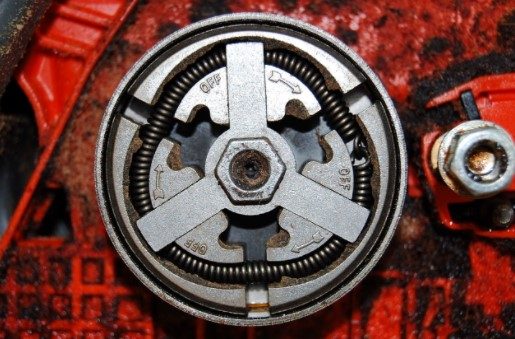
With its traditional appearance and ease of use, a centrifugal clutch is the first choice for many new motorcycle riders and is popular with vintage scooters.
So, when the clutch lever on a centrifugal bike is pulled in, a chain pulls a small wheel with teeth around the circular plate inside the clutch housing. That plate engages a secondary clutch attached to the flywheel through mechanical leverage.
Then the flywheel spins the large wheel that drives the transmission. In addition, centrifugal clutches are relatively maintenance-free and require no adjustment other than inspection for wear or damage.
How To Adjust Clutch Engagement Point Motorcycle?
If you have any issue with your clutch cable slack, you should follow the following step to adjust the clutch engagement point on your motorcycle. You sure need to adjust periodically to account for the wear of the plates. Also, it helps to ensure you prolong the lifespan of your clutch operation. So, let’s get started.
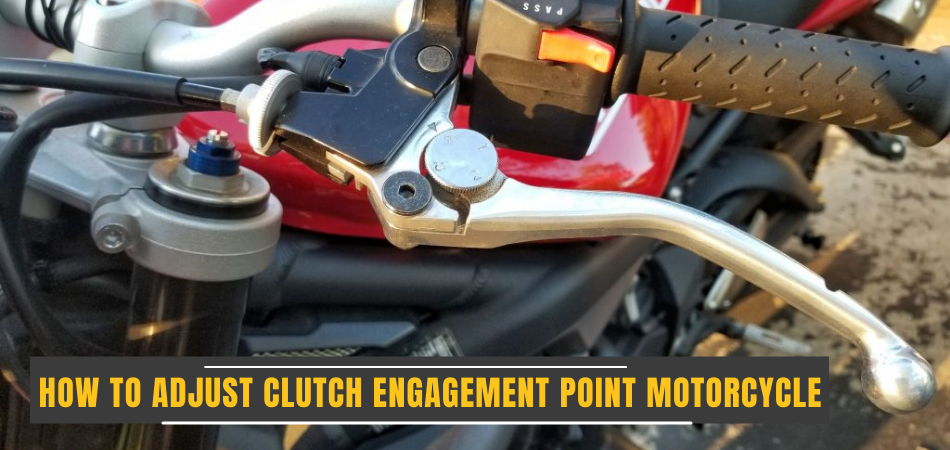
To adjust the clutch engagement point motorcycle, you have got two options to do that.
Check the lever of the motorcycle
It is the most convenient method of adjusting the clutch engagement point motorcycle. You just need to crack the lock nut-free and spin the adjuster in. So, if you spin in the adjuster, it will increase the slack, and if you back it off, it will decrease the slack.
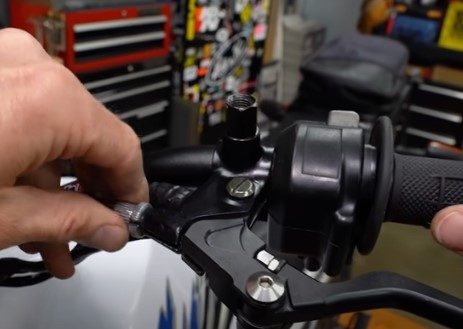
Adjuster at the engine
The second method is tracing the cable down the motorcycle to locate the adjuster. It is almost near to the engine of the motorcycle. You should use the torque wrench set and spanner to hold and tighten the slack.
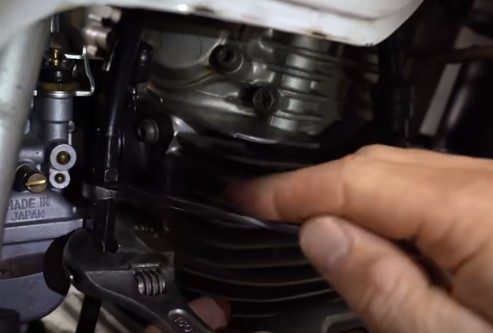
How To Tell If Your Motorcycle Clutch Is Bad?
Motorcycle clutch failure can happen to any brand or model, though some are more susceptible than others. You can use several indications to determine if your clutch is bad.
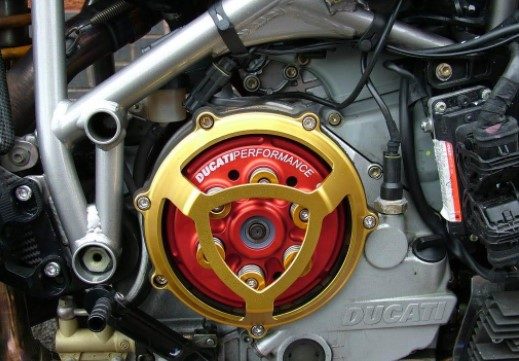
Poor acceleration
A bad motorcycle clutch means that your bike is underpowered, which can ruin the experience of riding. The first sign of a bad motorcycle clutch is slow acceleration. Your motorcycle will refuse to accelerate the way it is used to, and that is an indication that your clutch is going bad or bad already.
Sticking clutch
If your clutch is sticking or not disengaging properly, or you face compromised clutch control then it could be bad. Most people don’t pay attention to the tell-tale signs of a ruined motorcycle clutch. Even though it can be very subtle, a slipping or sticking clutch can often cause serious issues.
If you notice that your clutch is beginning to stick or act funny, then you should take your motorcycle for servicing or get a clutch replacement.
The vibration of the motorcycle
A bad clutch is one of the most common problems that cause a motorcycle to shudder and shake. This clutch problem is usually caused by either wear and tear or an impact that has damaged your clutch system.
Knowing how to identify signs of a broken clutch can control the problem before it gets out of hand. However, it should be noted that if your riding style involves many downshifts and engine braking, then clutch problems are likely to occur with regular use.
Hard gear shifting
Your clutch is designed to help you ride by disengaging the engine and transmission when you push on your clutch lever. Once this becomes hard to do, it is a sign that the clutch is bad. Difficulty in shifting gear means that your clutch is bad, so you should take it to a mechanic to get it fixed.
Conclusion
Now that you know how to adjust the clutch engagement point on a motorcycle, you can go give it a try yourself. Leaving your slack or sticking clutch is never a safe thing to do. Because a faulty clutch increases the chance of getting involved in an accident. You should always proceed cautiously and check your clutch adjustment monthly for a proper engagement point.
